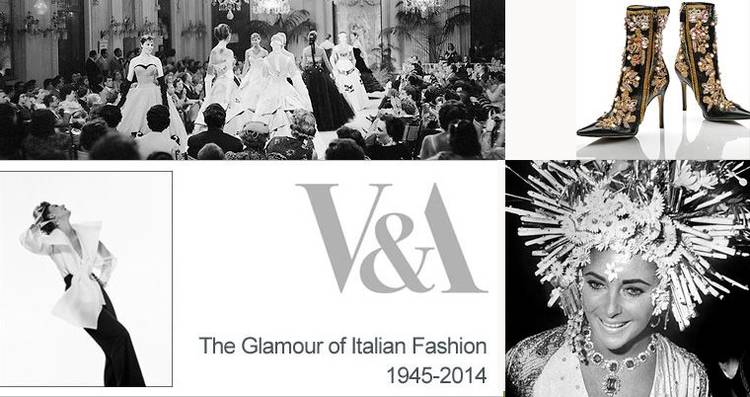


LONDON - For well over half a century Italian fashions have loomed large on the international stage, which is how I happened to be seated one evening in 1974 directly behind Gina Lollobrigida and Audrey Hepburn at Valentino's swanky atelier near the Spanish Steps in Rome. I was covering high fashion week for Reuters, and, this being the Swinging Seventies, Valentino was king of fashion. But if I was being flattered with a seat in Row Two for the first time (usually I was tucked away invisibly in the back), the royals of fashion, beginning with Vogue editor-in-chief Diana Vreeland, were already established in their customary thrones of honor in Row One.
London is planning to honor those halcyon Italian fashion years with a major exhibition at the Victoria & Albert Museum that opens April 5 and will continue through July 2014. Called "The Glamour of Italian Fashion 1945-2014," it is the first major exhibition on the subject and puts on view some 100 outfits and accessories by, among others, Giorgio Armani, Dolce & Gabbana, Gucci, Missoni, Prada, Pucci, Versace and, naturally, Valentino.
The show, sponsored by Bulgari and curated by Sonnet Stanfill (she worked two years in its preparation), honors the contribution of Italian design, textiles and craftsmanship in the post-World War II resurgence of Italy, its economy and its image. To achieve this meant that, beginning in the Fifties, the diverse centers from Milan to Rome, Florence and Naples involved in fashion--which is to say leather craft, textile design and manufacture, tailoring and the introduction of knitwear as respectable fashion--had to work together for the first time. It began with the twice-yearly high fashion showings in Palazzo Pitti in Florence, which paved the way for the development of what was called high fashion ready-to-wear.
This was also the Rome of Fellini and Cinecitta', and attracted Hollywood stars like Elizabeth Taylor, who did her jewelry shopping at Bulgari. On exhibit is a diamond and emerald necklace from Bulgari which Richard Burton gave Elizabeth as a wedding gift, and which she wore with her costume for a Carnevale party in Venice. And, as the London fashion press reminds us, when Marilyn Monroe died she was buried in one of her favorite frocks by Emilio Pucci.
For many of us multi-tasking foreign journalists (and they included men as well as women), to cover the six Italian fashion weeks in Rome, Florence and Milan came as a welcome respite from our following, and trying to understand, the profoundly disturbing political terrorism that also marked the Seventies. We Anglo-Saxon journalists tried hard to make sense of why there was at one and the same time such creativity and such destruction. "It's simple," an Italian journalist told me. "Half of Italy creates, the other half destroys."
Of course this was not true; the destructive portion was extraordinarily small but noisy while the creative portion was huge. Our job was to help present this creativity to the world. And this is why my heart leaped at the headline in the London Evening Standard on November 6, which read, "Dazzling V & A show to celebrate the best of Italian style." We were there, and we were dazzled.
We also had a silly but amusing ritual. Mila Schon always showed interesting color combinations in her outfits, and so we made a point of going out for tea after the Mila Schon exhibition in Florence and ordering cakes frosted in the colors of her show. An easy year was when all was orange and chocolate, but when her colors were more complicated, we were in trouble to find an appropriate frosting. After the evening shows I would have to rush back to a hotel to write at midnight and then send the urgent text by teletype or, more often, dictate it.
Today the Italian fashion industry is challenged by the mega-production of, especially, China. But here in London curator Stanfill predicts that in the long run Italian fashions will continue to appeal to those who demand quality.
Some confirmation of this came from Vincenzaoro, a showcase for the Italian jewelry industry in September. A problem is that gold prices have risen, making the finely finished product which is an Italian speciality more expensive, and the number of buyers dropped from 18,000 from to 16,000. However, for the first time in two years sales rose in money terms by 6% while the quantity of sales was up by 2.6%, according to the official Italian statistics-gathering agency ISTAT. Better still, jewelry exports soared by 12% over the past two years. The majority of buyers were Italian, but almost two-thirds came from 110 other countries.
Source URL: http://ftp.iitaly.org/magazine/focus/facts-stories/article/london-applauds-italian-fashions
Links
[1] http://ftp.iitaly.org/files/modalondra1384231339jpg